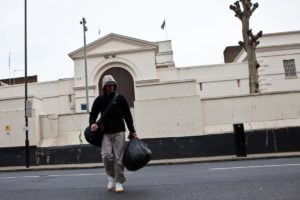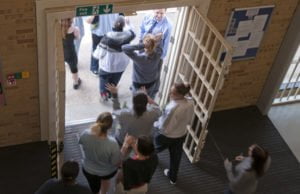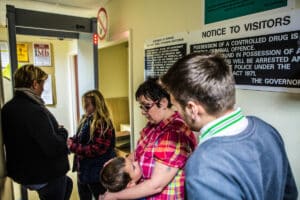Constructive resettlement
The London Resettlement Partnership (LRP) has just launched a new resource hub which acts as a central source of Constructive Resettlement guidance and tools for people working with children in the Youth Justice System.
The Youth Justice Board has adopted Constructive Resettlement as its ‘theory of change’, championing it as a new, actionable approach for the sector, with a clear, united focus. The aim of the resource is to support youth justice practitioners in implementing Constructive Resettlement in their daily work to achieve sustained, positive outcomes for children.
About the London Resettlement Partnership
LRP is a new, innovative and joint approach committed to improving the resettlement experience for children. The LRP launched in 2020 with partners including all 32 London Boroughs, Association of London Directors of Children’s Services, Ministry of Justice, Youth Justice Board, Youth Custody Service, Mayors Office for Policing and Crime and NHS England. The LRP aims to improve outcomes for children by working in partnership to present real opportunities that support their return to the community with the aim of reducing reoffending.
In addition to an introductory video, and an introduction from Professor Neal Hazel, the leading academic in this area, the resource hub is divided into four main sections:
- A theory section
- A toolkit
- Real stories from practitioners putting constructive resettlement (CR) into practice
- FAQs
Theory
The theory section includes more information about the core elements to Constructive Resettlement. The section first teaches practitioners how to adopt Constructive Casework and then informs them how to implement the 5Cs of Constructive Resettlement into everyday practice. The five Cs are associated in research with positive outcomes. These can be used as a checklist for the likely effectiveness of any package of resettlement support:
Constructive
The work is positively focused on developing the child’s pro-social identity, with all interventions considered in relation to that objective. Support is future-focused and strengths-based, rather than focusing on past behaviour in stigmatising ways. Work motivates and empowers the child to make positive choices.
Co-created
The child’s identity is personal to them, so it’s crucial that they are involved with any planning. This will help ensure that they consider the support as relevant to their needs and future, and so help engagement. Family and friends are important sources of support and should be brought on board where appropriate, with barriers to engaging them addressed as a priority.
Customised
As every child’s resettlement journey is different, service providers need to create an individualised package of wraparound support, rather than merely delivering generic interventions. Support should consider the child’s self-identified characteristics (including ethnicity and gender).
Consistent
As resettlement is a long-term journey for the young person (not just release from custody), any shift in identity requires continuous support, from the very beginning of a sentence (if not before), to beyond the end of it. Support between custody and community should be one seamless programme, which
requires all agencies to work together and exchange information, and community support established long before release. Temporary release is a vital tool for establishing community placements and to help reduce disorientation after release. Ideally, custody and community agencies should share aims and targets around identity development and hold each other to account. Trust and engagement are fostered by consistent staff relationships and, in custody, not moving children between institutions.
Coordinated
The complex nature of children’s needs means that a wraparound package of support cannot be achieved by one agency, but requires partnership across sectors, including voluntary agencies and private employers. Successful resettlement programmes require service managers to broker the engagement of partners in order to map and maintain a menu of local support.
Finally the theory section explains the importance of identity awareness in helping children construct non-offending identities.
Toolkit
The toolkit section is in the early stages of development, Currently it provides a guide on the constructive resettlement approach, in particular enabling a child to shift to a more pro-social identity.
Real stories
The real stories section gives practice examples of how practitioners implementing Constructive Resettlement have made a real difference to children’s lives.
FAQs
The frequently asked questions section of the site is particularly useful and currently includes answers to 9 common questions:
- What is Constructive Resettlement and how is it different to resettlement?
- Why is Constructive Resettlement so important?
- How do I put Constructive Resettlement in to practice?
- When a child is in custody how do I continue to support them on their Constructive Resettlement journey?
- Who should lead on Constructive Resettlement to support the child on their journey?
- A child I was working with has reoffended. What next?
- How do you translate their goals and aspirations in to a real resettlement plan that supports both personal and structural elements?
- What about children that are on a community order or are at risk of offending? Can Constructive Resettlement apply to those children?
- How can I learn more to effectively put Constructive Resettlement into practice?









2 Responses